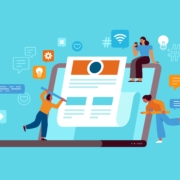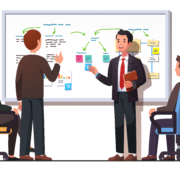
Services and Solution selling is a customer-centric approach that focuses on building relationships, understanding customer needs, and delivering tailored solutions. By mastering the key practices of solution selling, you can enhance your sales effectiveness and drive revenue growth.
1. Orchestrating the Sales Process
- Understand the Buyer’s Journey: Gain insights into your target customers’ decision-making processes to effectively guide them through the sales funnel.
- Tailor Your Approach: Adapt your sales strategies to address the specific needs and challenges of different customer segments.
- Leverage Technology: Utilize CRM systems and other digital tools to streamline the sales process and track progress.
2. Cultivating Effective Selling Skills
- Develop Strong Communication Skills: Listen actively, empathize with customers, and communicate persuasively.
- Master the Art of Negotiation: Be prepared to negotiate terms and conditions effectively.
- Build Rapport and Trust: Establish strong relationships with customers based on mutual respect and understanding.
3. Prospecting and Initial Approach
- Identify Ideal Customers: Define your target market and create detailed customer personas.
- Utilize Effective Prospecting Techniques: Employ a combination of outbound prospecting, networking, and digital tools to identify potential leads.
- Personalize Your Approach: Tailor your outreach to address the specific needs and interests of each prospect.
4. Exploring Customer Needs and Challenges
- Conduct In-Depth Discovery: Actively listen to customers to understand their challenges, opportunities, and goals.
- Diagnose Pain Points: Identify the root causes of customers’ problems and propose tailored solutions.
- Innovate and Adapt: Continuously seek new ways to address customer needs and differentiate your offerings.
5. Overcoming Obstacles and Addressing Concerns
- Anticipate Objections: Prepare for common objections and develop effective responses.
- Address Concerns Proactively: Listen attentively to customer concerns and address them promptly.
- Frame Challenges Positively: Reframe objections as opportunities to provide additional value.
6. Presenting Persuasively
- Structure Your Presentations: Use a clear and logical structure like SCQA to guide your audience through your message.
- Highlight Value: Emphasize the benefits of your solution and how it addresses your customer’s needs.
- Use Storytelling: Engage your audience with compelling stories and anecdotes.
- Leverage Visual Aids: Use visuals to enhance your presentations and make your message more memorable.
7. Gaining Commitments and Closing Deals
- Develop Tailored Solutions: Work with your team to craft a distinctive solution that addresses your customer’s business needs.
- Build Consensus: Work with decision-makers to gain buy-in from all stakeholders.
- Negotiate Effectively: Be prepared to negotiate terms and conditions to reach a mutually beneficial agreement.
- Close with Confidence: Use persuasive techniques and address any remaining concerns to secure the sale.
8. Leveraging Team Selling
- Coordinate Team Efforts: Ensure all team members are aligned and working towards a common goal.
- Utilize Diverse Expertise: Leverage the expertise of different team members to provide comprehensive solutions.
- Empower Your Team: Provide your team with the necessary training, tools, and support to succeed.
9. Continuous Improvement
- Seek Feedback: Regularly solicit feedback from customers and team members to identify areas for improvement.
- Stay Updated on Industry Trends: Keep abreast of the latest trends and best practices in sales and marketing.
- Invest in Ongoing Training and Development: Provide opportunities for your sales team to learn and grow.
By mastering these key elements of strategic selling, you can enhance your sales effectiveness, build stronger relationships with customers, and drive more accelerated, predictable, and sustainable revenue growth.










Leave a Reply
Want to join the discussion?Feel free to contribute!